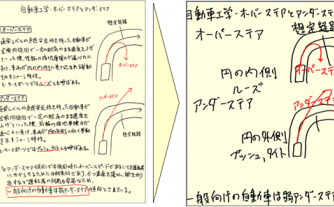show advanced search
-
121-140 / 433
- display number
-
order by date
-
order by researcher's name
-
order by affiliation
2011-0914-04
Manufacturing Technology
posted:2014/05/21
Manufacturing methods and improvement of mechanical properties for porous metals
SUZUKI, Shinsuke Professor (Faculty of Science and Engineering School of Fundamental Science and Engineering Department of Applied Mechanics and Aerospace Engineering)
Manufacture of various kinds of aluminum alloy using the melt-foaming method (proposal for pore stabilization)Technique for strengthening porous metals by plastic working (rolling, extrusion, wire brushing, shot peening, etc.)
2011-0913-02
Information Communication
posted:2014/05/21
Creation of effective thumbnails based on handwritten notes
YAMANA, Hayato Professor (Faculty of Science and Engineering School of Fundamental Science and Engineering Department of Computer Science and Engineering)
When displaying lists, thumbnails are effective as details can be ascertained easily from an overview, but with handwritten data, the characters can become too small, resulting instead in an increase in time required.Therefore, reduced thumbnails are produced automatically usi...
2011-0913-01
Information Communication
posted:2014/05/21
System for the handwritten input of mathematical expressions: MathBox
YAMANA, Hayato Professor (Faculty of Science and Engineering School of Fundamental Science and Engineering Department of Computer Science and Engineering)
The symbols in expressions can be recognized using existing character-recognition techniques, but the recognition of expression structures is difficult, which caused a drop in the accuracy of expression recognition. Accordingly, the pattern of the structure is predicted and a ...
2011-0909-02
Environment
Nanotechnology / Materials
posted:2014/05/21
Manufacture of flexible transistors using inkjet methods
TAKENOBU, Taishi Guest Professor (Faculty of Science and Engineering School of Advanced Science and Engineering) (retired)
It is possible to fabricate organic transistors onto plastic substrates by the inkjet method, by using a solution in which single walled carbon nano-tubes are dissolved in an organic solvent as the ink.
2011-0909-01
Environment
Nanotechnology / Materials
posted:2014/05/21
Organic light-emitting transistors
TAKENOBU, Taishi Guest Professor (Faculty of Science and Engineering School of Advanced Science and Engineering) (retired)
Construction of transistors rather than diodes, however, allowed large currents to flow and light-emitting phenomena to be obtained. By adjusting the oscillatory conditions, organic lasers become an attainable goal.
2011-0909-04
Environment
posted:2014/05/21
Increase in thermal energy quality through chemical regeneration
NAKAGAKI, Takao Professor (Faculty of Science and Engineering School of Creative Science and Engineering)
While thermal energy can be obtained easily and in large volume, it is irreversible, making it difficult to maintain a high-exergy-rate state. To address this, we can use chemical regeneration. Exergy-lowering processes like vapor reformation and partial oxidation chemically d...
2011-0909-03
Environment
posted:2014/05/21
Techniques for separation and recovery of CO2 using lithium silicate
NAKAGAKI, Takao Professor (Faculty of Science and Engineering School of Creative Science and Engineering)
“Lithium silicate” (Li4SiO4), developed by Toshiba, is a solid absorption material that can be used repeatedly to absorb CO2 at 600º and release CO2 at over 800º. It has excellent properties, such as higher absorption speed in the presence of water vapor, the ability to separa...
2011-0909-06
Life sciences
Manufacturing Technology
posted:2014/05/21
Acellularization of heart valves
IWASAKI, Kiyotaka Professor (Faculty of Science and Engineering Graduate School of Advanced Science and Engineering Cooperative Major in Advanced Biomedical Sciences)
One of the ways of prolonging the life of tissue valves is to not treat them chemically, and use acellular tissue from porcine heart valves. A unique method of microwave irradiation combined with a simulated in vivo environment (controlled surfactant flow and pressure through ...
2011-0909-05
Life sciences
Manufacturing Technology
posted:2014/05/21
A durability testing device for stents and a method of evaluation
IWASAKI, Kiyotaka Professor (Faculty of Science and Engineering Graduate School of Advanced Science and Engineering Cooperative Major in Advanced Biomedical Sciences)
We developed a testing device that could accurately simulate the stress environment of the area where the stent is inserted. The development of a system that takes into account the application of stress in the form of a combined twisting and stretching force, and the mechanica...
2011-0908-02
Information Communication
posted:2014/05/21
Elucidating the vulnerability of IC cards and establishing countermeasures
TOGAWA, Nozomu Professor (Faculty of Science and Engineering School of Fundamental Science and Engineering)
In the scan path design, “scan registers” are incorporated randomly into the LSI, so it was originally secret information that only the designer knew.We demonstrated that it is possible to decipher the cryptographic processing of LSI in IC cards by making use of the regularity...
2011-0908-01
Information Communication
posted:2014/05/21
LSI design technology for integrated systems that realizes ultralow energy
TOGAWA, Nozomu Professor (Faculty of Science and Engineering School of Fundamental Science and Engineering)
We are implementing a generalized rule that remains consistent throughout higher and lower processes by creating an abstraction model based on new concepts of “strong coupling” and “weak coupling” in regard to the three factors of functional modules, memory, and control that m...
2011-0907-02
Social Infrastructure
posted:2014/05/21
Scientific analysis of the workflow in the production of animation and long-term human resources cultivation
SHICHIJO, Naohiro Associate Professor (Affiliated organization Waseda Institute for Advanced Study) (retired)
Based on detailed ethnographic analyses of the workflow in the production process of animations at different companies, it is possible to recreate simulations of the individual processes. Based on this model, we will be able to give advice on division of labor from the perspec...
2011-0907-01
Social Infrastructure
posted:2014/05/21
Methods of quantitative evaluation and searching for industry-academia and inter-corporate alliances in research and development
SHICHIJO, Naohiro Associate Professor (Affiliated organization Waseda Institute for Advanced Study) (retired)
We can analyze the influence inter-corporate collaboration has on the boosting of research and development capabilities using object data such as those taken from patents or academic papers.Using the results of analyses to select the coordinator that is most suitable for the i...
2011-0906-04
Social Infrastructure
posted:2014/05/21
The creation of indexes for fostering green manufacturers and green consumers
WASHIZU, Ayu Professor (Faculty of Social Sciences School of Social Sciences)
We implement a method of analyzing inter-industry relations in the evaluation of influence by corporate environmental activities on the environment from a wide range of perspectives. Furthermore, econometrics methods based on social statistics will be applied in order to evalu...
2011-0906-06
Life sciences
posted:2014/05/21
New anti-Leishmania agent
NAKAO, Yoichi Professor (Faculty of Science and Engineering)
“Cristaxenicin A,” a new chemical compound with anti-Leishmania properties
2011-0906-05
Life sciences
posted:2014/05/21
Natural marine chemical compounds as materials for drugs As a tool in chemical epigenetics
NAKAO, Yoichi Professor (Faculty of Science and Engineering)
Samples of marine organisms: Over 1,500 species, including marine sponges, coelenterates, protochordates, echinoderms, and mollusks.A diverse range of sampling areas: Japan (Ryukyu Islands, coastal Kyushu, Izu Islands, Sado Island, coastal Sanriku, Kuril Islands), Micronesia, ...
2011-0906-03
Nanotechnology / Materials
Energy
posted:2014/05/21
Organic-air rechargeable batteries
OYAIZU, Kenichi Professor (Faculty of Science and Engineering School of Advanced Science and Engineering)
We developed an organic rechargeable battery that uses air for the cathode. It can be recharged in a short time (a few seconds). It’s capacity also remained almost unchanged through 500 charge-discharge cycles.An organic polymer material was used to replace the anthraquinone i...
2011-0906-02
Nanotechnology / Materials
Energy
posted:2014/05/21
The controlling of light energy with precious metal nanoparticles (plasmonic substances)
IMURA, Kohei Professor (Faculty of Science and Engineering School of Advanced Science and Engineering)
Using a near-field optical microscope allows the observation and visualization of the plasmon of plasmonic substances. Plasmonic substances demonstrate a variety of behavior through their interaction with light, the progress of which can be tracked in high time and spatial res...
2011-0906-01
Nanotechnology / Materials
posted:2014/05/21
Observing substances under a near-field optical microscope
IMURA, Kohei Professor (Faculty of Science and Engineering School of Advanced Science and Engineering)
Using a near-field optical microscope allows observation of the shape, as well as the color of substances in an estimated area of 10 to 100 microns squared.
2011-0517-04
Life sciences
posted:2014/05/21
Comparison of a murine model with humans using noninvasive measuring of biomagnetism, and its application in brain disease diagnosis
ISHIYAMA, Atsushi Professor (Faculty of Science and Engineering School of Advanced Science and Engineering) (retired)
SQUID (superconducting quantum interference device), which is a high sensitivity magnetic sensor, is able to measure weak magnetic fields (magnetoencephalographs) generated by neurotransmissions (brain activity) without being obstructed by the skull. For example, using SQUID t...















